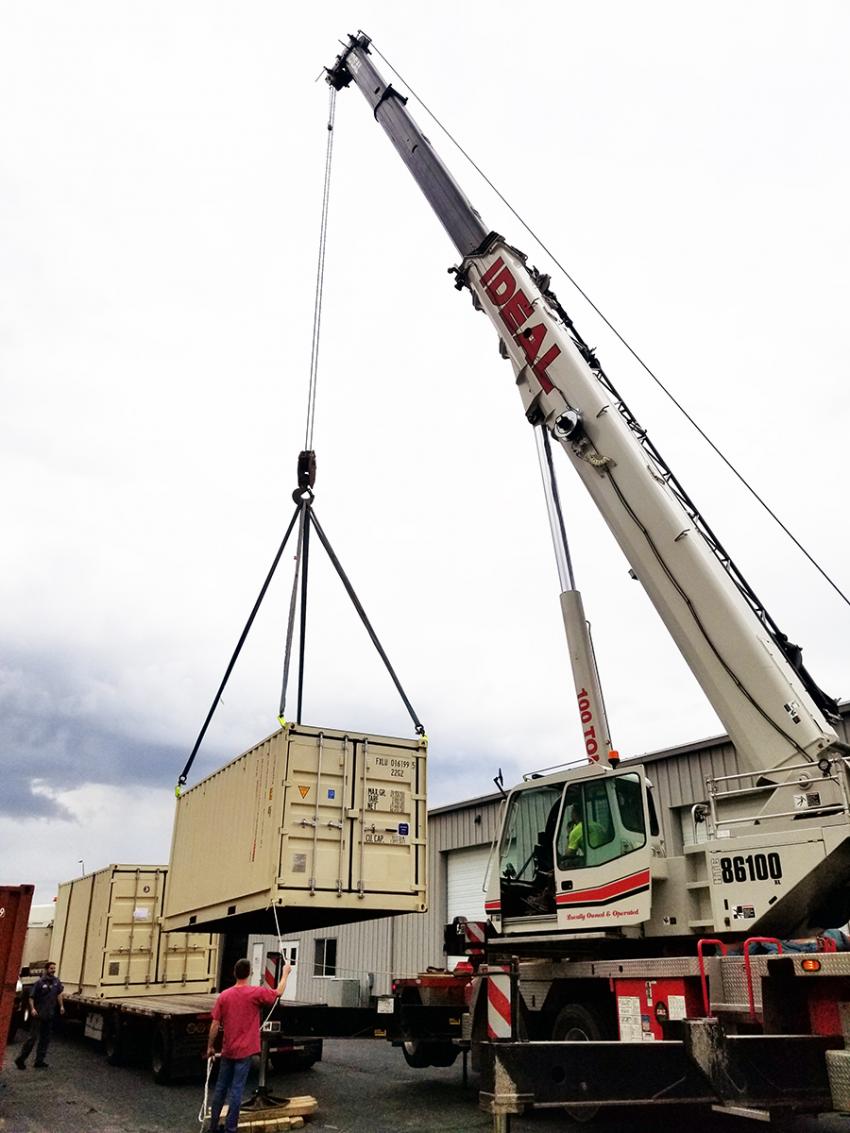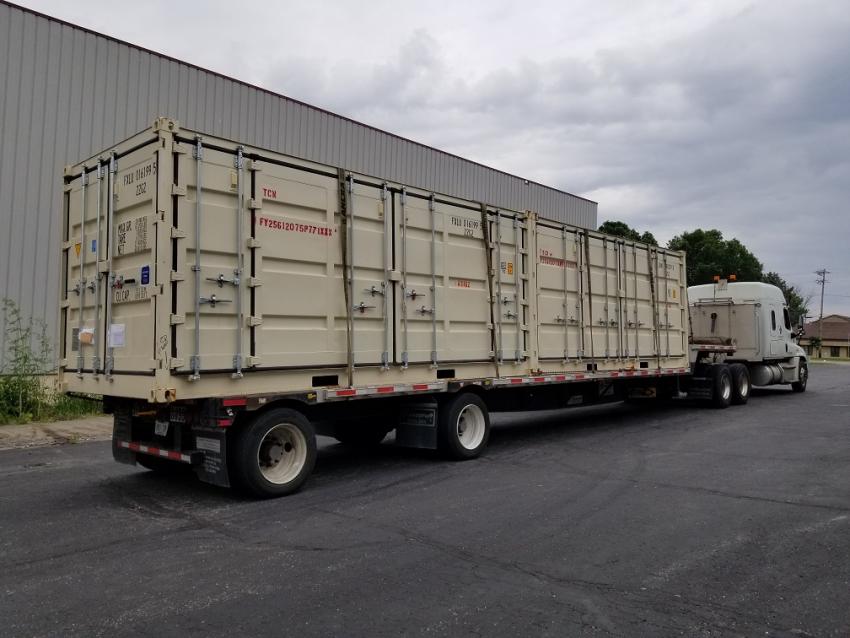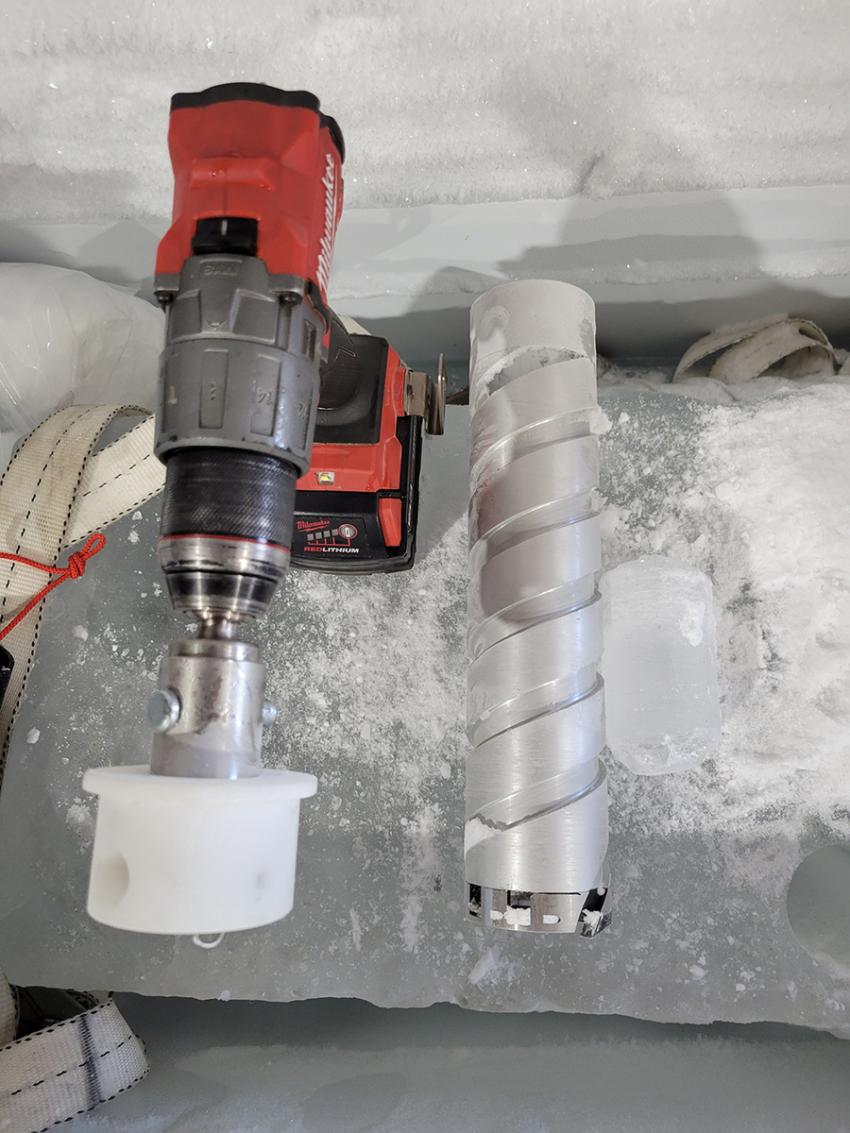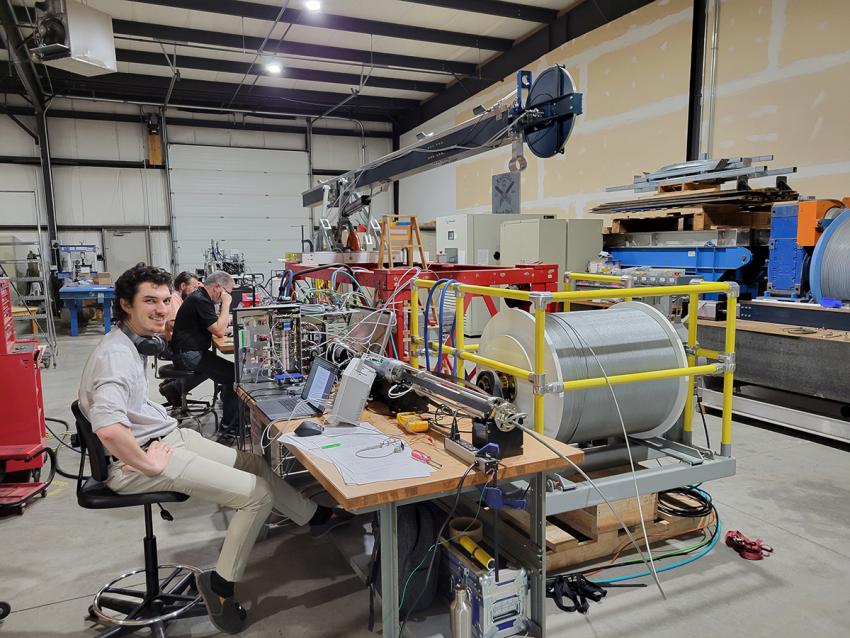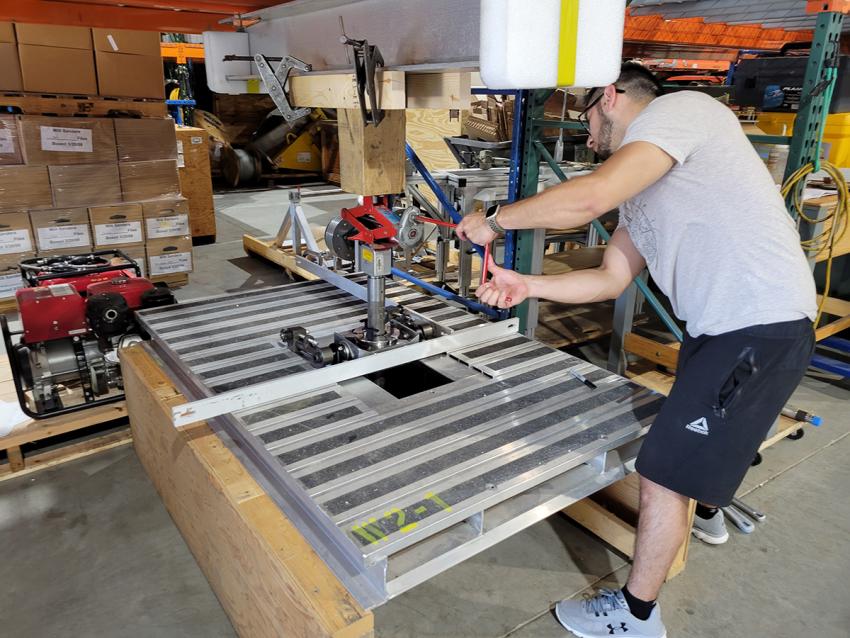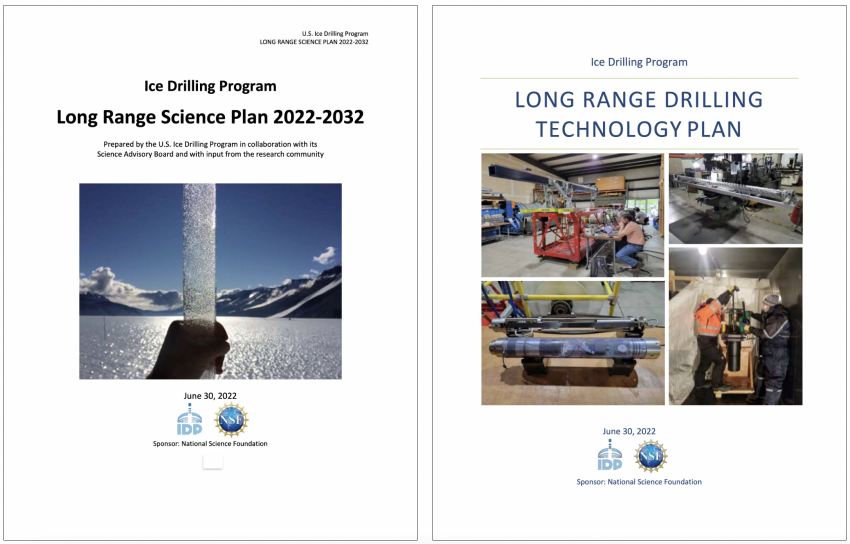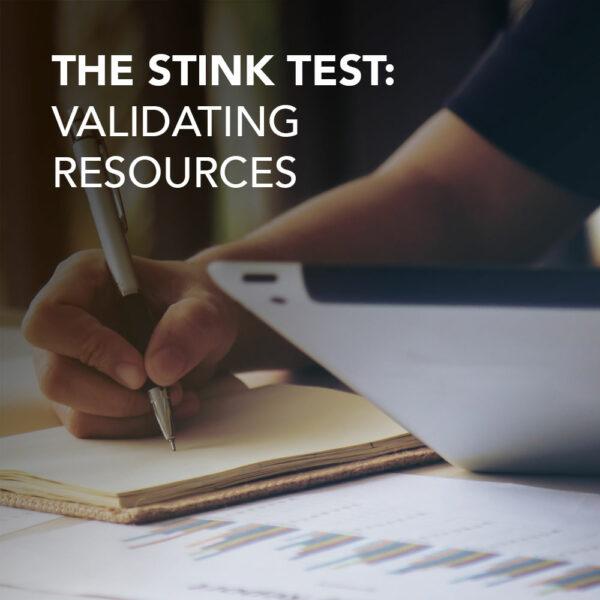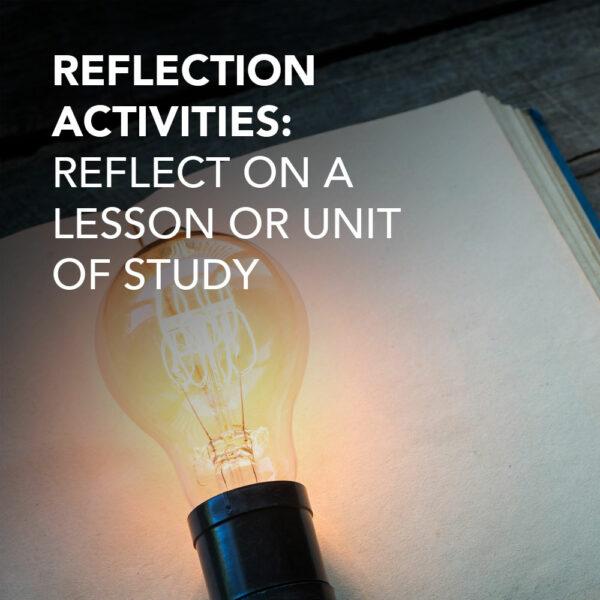During the third quarter, IDP successfully prepared and packed two 20-foot containers full of ASIG Drill equipment, following diligent system modifications, upgrades, and system testing by IDP engineers and students. In June, the containers were shipped to Norfolk, VA, for further transport on the Pacer Goose military vessel to Thule, Greenland. The drilling equipment will be staged in Thule for inland transport in 2023 in support of the first season of the GreenDrill project. IDP will utilize the ASIG Drill and a Winkie Drill to collect subglacial rock core samples for the project.
ASIG Drill Departs Madison for Upcoming GreenDrill Project
- Agile Sub-Ice Geological Drill
- Winkie Drill
- Fieldwork
Equipment Testing in Full Swing
- Stampfli Drill
- Winkie Drill
IDP engineers worked during the third and fourth quarters to integrate new drill system components and conduct testing at the IDP Warehouse and Drill Maintenance Facility. A damaged core barrel from the Stampfli Drill was cut off and repurposed for use with the Chipmunk Drill. The barrel performed well during preliminary testing in a chest freezer and will be further tested in Wyoming ice patches in September by a science team. IDP conducted Foro 3000 Drill electronics testing and developed a LabVIEW user interface for operation of the drill. In collaboration with design firm QD-Tech, IDP designed a new slip-style foot clamp for the Winkie 2 drill to improve drill rig safety. The wedge design of the jaws allows drill rod to be freely raised but prevents accidental lowering. In June, IDP completed assembly and load testing of the new foot clamp to 1400 lbs., which is twice the weight of 100 m of drill rod.
IDP Welcomes New Field Support Manager Jess Ackerman
After an extensive search, IDP hired new Field Support Manager Jess Ackerman, who started with IDP in August. Jess Ackerman has extensive polar field experience, having deployed to McMurdo Station, South Pole Station, deep field camps, the Dry Valleys, Palmer Station, and Greenland, and time on two United States Antarctic Program (USAP) research vessels. With a well-rounded background in polar logistics, experience with heavy equipment operation, and love of fieldwork, IDP is excited to help her hit the ground running.
IDP Ice Drilling Community Survey
- Long Range Plans
- Meetings/ Workshops
You are invited to participate in a brief survey about the U.S. Ice Drilling Program (IDP). The purpose of this survey is to help IDP learn about who we are reaching in the community and to solicit feedback on IDP’s planning, field support, education and outreach, and communication and website activities.
The anonymous survey will take about 10 minutes to complete and your participation in the survey will help IDP better serve the community.
We know your time is valuable and that this is a busy time – we are leaving the survey open through October to get as many responses as possible.
Please visit https://forms.gle/hpXopxZnrakfCehi9 to complete the survey. Thank you!
2022-2032 Long Range Science and Long Range Drilling Technology Plans Updated
- Long Range Plans
- Fieldwork
The U.S. Ice Drilling Program (IDP), in collaboration with its Science Advisory Board and with input from the research community, updated the Long Range Science Plan. The purpose of this plan is to articulate goals and make recommendations for the direction of U.S. ice coring and drilling science in a wide variety of areas of scientific inquiry and to make recommendations for the development of drilling technology, infrastructure, and logistical support needed to enable the science. A companion document, the Long Range Drilling Technology Plan, provides details about drills available through IDP. Both plans are revisited and revised as appropriate each spring. The Long Range Science Plan is available at https://icedrill.org/long-range-science-plan. The Long Range Drilling Technology Plan is available at https://icedrill.org/long-range-drilling-technology-plan.
If you envision the need for ice drilling for your project in the coming decade, please make sure that the high-level articulation of your science is captured in the Long Range Science Plan. If it isn’t, send several sentences to IceDrill@Dartmouth.edu describing the science driver and the envisioned field date and location for your project so that your plans are voiced in this planning document.
IDP Education and Public Outreach Update Summer 2022
- Education/ Outreach
In a time when evidence-based information is questioned, it is imperative to teach students how to recognize whether a source is valid or not. The Stink Test, a resource for teaching students how to validate sources, has been recently updated by IDP and is bringing new traffic to the IDP education and outreach website. The Stink Test activity was downloaded 131 times in July after being presented at the NOAA/Climate Generation Summer Institute. By practicing the elements of the STINK Test, students build both background knowledge as well as the skills necessary to be a discerning consumer of information.
IDP has also recently updated the Reflection Activities classroom resource, which contains ideas for encouraging students to reflect on their learning before, during, or after a unit or lesson.
Stay Connected with IDP
Join our mailing list! We use our mailing list to communicate important IDP news and announcements to members of the ice drilling and ice coring science and technology communities. You can also follow us on Twitter, Instagram, Facebook, and YouTube. And you can find us on the web at https://icedrill.org and http://icedrill-education.org.
Acknowledgment of IDP in Publications
- Publications
If you receive any support from IDP, we kindly request that you acknowledge IDP in any resultant publications or articles with the following statement: “We thank the U.S. Ice Drilling Program for support activities through NSF Cooperative Agreement 1836328.” If you have any questions, please contact us at IceDrill@Dartmouth.edu.
Ice Drilling Support for NSF Polar Proposals
- Funding Opportunities/ Solicitations
- Education/ Outreach
If you are preparing a National Science Foundation (NSF) proposal that includes any kind of support from IDP, you must include a Letter of Support from IDP in the proposal.
Researchers are asked to provide IDP with a detailed support request three weeks prior to the date the Letter of Support is required. Early submissions are strongly encouraged.
Scientists who seek to include IDP education and outreach activities associated with U.S. ice coring or drilling science projects should contact Louise Huffman at Louise.T.Huffman@Dartmouth.edu during their proposal preparation stage.
For further information on requesting IDP support, visit our website at https://icedrill.org/requesting-field-support or contact us at IceDrill@Dartmouth.edu.



